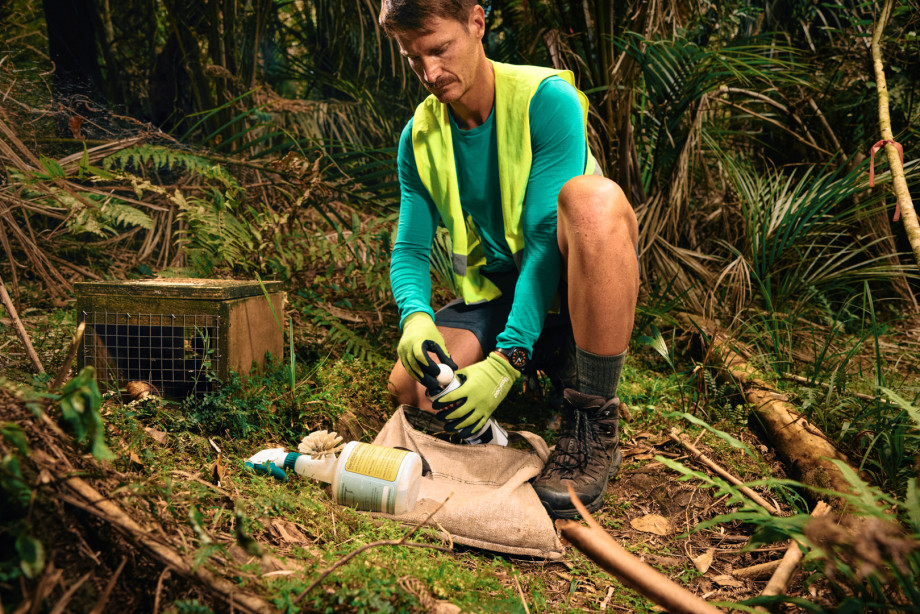Trapping and pest control
You can help protect Kauri from the PA pathogen that causes kauri dieback disease.

Pest control options
Aerial pest control is preferred as it reduces the risk of PA spread and introduction. If on-ground pest control is the best - or only - option, ensure you always respect track closures and rāhui (protective restrictions), and follow the principles below.
Here’s how to protect Kauri when you’re conducting on-ground pest control in a Kauri forest:
- Stay out of Kauri forests when the ground is wet.
- Consider conducting pest control at the forest’s perimeter.
- Plan your pest animal control activities or trap lines to avoid Kauri, and place traps well away from Kauri Hygiene Zones (see the Pest control flyer, below).
- For existing trap lines, reposition traps away from Kauri when possible, and redirect routes to avoid Kauri Hygiene Zones.
- Carry and use a hygiene kit (see the Pest control flyer, below) and use all hygiene stations you come across.*
- Arrive clean, stay clean, leave clean. Clean your footwear and all gear that will touch the forest floor, so it is dirt-free before you enter and leave the forest.** Also clean these items when moving between Kauri Hygiene Zones if you cannot avoid them.
- Have separate footwear and clothing to wear in Kauri forests – and remove and contain them, or clean them, before moving to another area.
- Place dead animals away from Kauri Hygiene Zones to prevent scavenging.
*If you don’t use hygiene stations, you could receive an infringement notice and fine, or a criminal conviction, according to rule 9 of the National Plan for the protection of Kauri.
**If you go off-track and don’t clean these items, you could receive an infringement notice and fine, or a criminal conviction, according to rule 8 of the National Plan for the
protection of Kauri.
The National Plan for the protection of Kauri
In August 2022, a National Plan was launched to help protect Kauri from the PA pathogen. The National Plan includes 10 rules that apply to anyone who goes into Kauri forests, grows Kauri, or lives or works around Kauri.